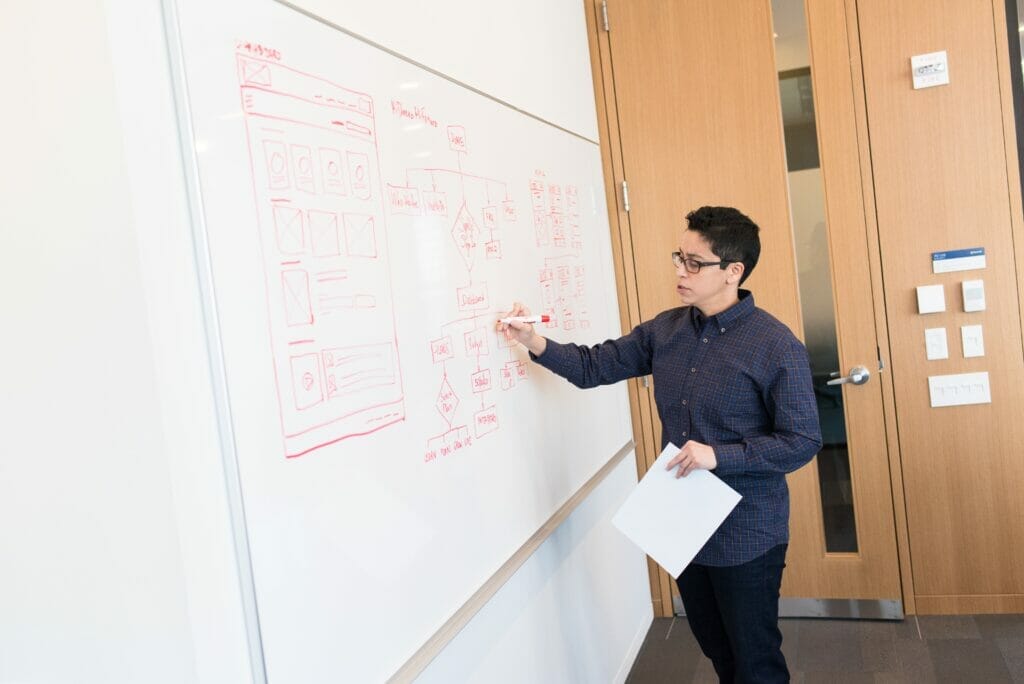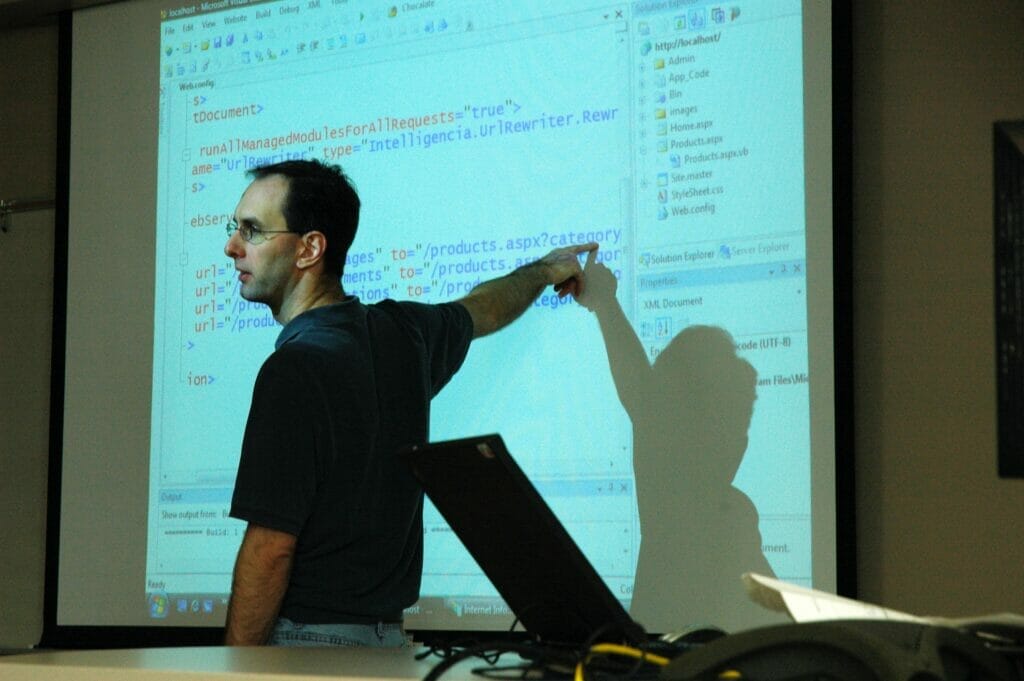Peer Tutoring: What Is It?
There may be some students in a class who struggle in their studies, as well as some who perform well.
Peer tutoring is a great way to provide additional support to struggling learners. Instead of relying solely on teachers to teach, students can work together to provide assistance to each other.
Students can tutor each other in math, reading, writing, science, social studies, art, music, physical education, foreign languages, computer applications, and so much more.
Peer tutors can be students themselves or adults who volunteer their time. There are no limits to where peer tutoring can happen. You can find peer tutors at school, online, through tutoring services, and anywhere else there are students.
It allows students to receive extra support without feeling left out. It gives them the opportunity of a deeper understanding of procedures and new concepts and reinforces old ones. Advanced Students can also learn from each other and gain confidence in their abilities.
Peer instruction is a powerful way to teach complex concepts. Students who participate in peer instruction tend to perform better on standardized tests and show higher levels of intrinsic motivation.
Peer tutoring allows students to get better grades without having to spend time commuting to classes. For parents, it means less stress and more free time. And for tutors, it offers a flexible way to earn some extra income.
Why Choose Peer Instruction?
Peer tutoring is a great strategy for helping students succeed in school. Students who receive peer tutoring tend to perform better academically than those who don’t.
Why is this? Because students who receive peer tutoring feel less isolated and more comfortable asking questions. Asking questions is a critical part of the learning process, so if you’re not comfortable asking questions, you won’t ask enough.
It also helps build relationships between students. By working together, students become closer friends and develop stronger bonds. These friendships can last throughout high school and beyond.
Peer tutors can provide additional assistance to struggling learners. Struggling learners may lack confidence in their abilities, so they struggle to ask questions. Peer tutors can model effective questioning techniques and encourage struggling learners to ask questions.
Peer tutorship is a great strategy for improving student performance. It builds strong connections between students and encourages them to work together.

What Peer Tutoring Models Are Most Frequently Applied?
There are several models of peer tutoring that are most frequently applied. One model involves advanced students working independently to solve problems. Another model involves students working collaboratively to solve problems.
A third model involves students working individually to solve problems, followed by a collaborative group discussion where students discuss their solutions.
A fourth model involves students working independently, followed by a collaborative discussion among the students. Finally, there is a fifth model involving students working collaboratively to develop a solution, followed by individual work and a final collaborative discussion.
Which model works best depends on the subject matter being taught and student compatibility. For example, if the class is studying algebra, then students might work independently to solve problems. However, if the class is teaching computer programming, then students might work collaboratively to develop a program.
Cross-Age Peer Tutoring
This peer tutoring program is great for any age group. Older students can be matched with younger students to teach them new skills or review old ones. It increases their skill level. The older student serves as a mentor and the younger student is a mentee.
The older student models appropriate behavior asks questions, and encourages better study habits. Meanwhile, the younger student learns from the experience and gains confidence.
Students with disabilities can also participate in this program. They can serve as mentors for younger students and gain confidence through teaching others.
This peer tutoring arrangement is beneficial for any age group. Students with disabilities can also participate.
Class-Wide Peer Tutoring
It is also one of the best peer tutoring strategies. Class-wide peer tutoring is a great way to teach children at school. It helps them develop social skills, build confidence, and work toward academic success.
Class-wide peer tutors typically divide the entire class into groups with varying abilities. Each group works together to tutor another group. This process continues until every student has had the opportunity to tutor someone else.
This method of teaching is called Classwide Peer Tutoring (CWPT), and it’s used in classrooms across America. It’s proven to be effective in helping students achieve academic success.
Students who participate in CWPT gain confidence, develop social skills, and become part of a supportive learning environment. They also enjoy working with others and feel valued for their contributions.
Peer-Assisted Learning Strategies
Peer Assisted Learning Strategies are a great strategy for helping children learn new behavioral concepts, key concepts, and skills. Students work in groups of two or three where one student acts as a tutor and another student acts as a tutee.
The tutor provides assistance to the tutee during class time. At the end of class, the tutor takes notes on the tutees’ progress and helps them review the material.
This method allows students to practice teaching and learning at the same time. It also gives teachers the ability to pair students who might not normally interact with each other.
For example, if a student needs extra help with math, he or she can ask a friend to serve as his or her tutor. Or, if a student struggles with reading comprehension, he or she can request a friend to serve as a tutee instead.
Reciprocal Peer Tutoring
This peer tutoring program is great for helping children learn. You’ll find that it helps them develop critical thinking skills, problem-solving abilities, and communication skills.
Reverse Peer Tutoring is a structured method of teaching where two or more students alternate between being the tutor and tutees. This allows for equitable time in each role, and it gives students the opportunity to teach each other.
Both group and individual rewards may also be earned to motivate and encourage learning. Students in RPT may select goals and rewards as outlined by their teachers.
Same-Age Peer Tutoring
Peer tutoring is great for helping struggling learners catch up quickly. However, if you’re not careful, it can actually hinder learning. There are several reasons why same-age peer tutoring doesn’t work well.
First, peers tend to be very competitive with each other. As a result, they end up competing instead of collaborating. Second, students who are close in age usually have similar academic backgrounds.
So, they already have a lot in common, making it harder for them to learn new things.
Third, younger students might feel intimidated by older peers.
Fourth, same-age peer tutors tend to be more focused on grades rather than learning. Fifth, younger students might not have enough experience to teach others effectively. Finally, same-age peer teaching is difficult to implement in large classrooms.
How Are Instructors And Students Chosen For Peer Tutoring?
Peer tutoring is one of the most effective ways to provide additional support to students who struggle with learning. However, not every student is suited for peer tutoring. Some students may feel uncomfortable asking questions or sharing ideas with others. Others may lack confidence in their abilities.
To select instructors and students for peer tutoring, look for students who are willing to ask questions and share ideas. Also, consider whether the student has any disabilities that might affect his/her ability to participate in peer tutoring.
In order to become a peer tutor, students need to complete a short application and then attend an interview.
Once they have been accepted into the program, they will receive training sessions on how to effectively teach others. In addition, they will be paired with instructors who have completed their own training. These instructors will serve as mentors and coaches for the student tutors.
The selection criteria for peer tutors include:
- A minimum grade point average of 2.0 (on a 4.0 scale)
- Good academic performance
- Strong communication skills
- Ability to work well independently
- Desire to help others succeed
- Willingness to commit time to the program
Students are selected based on their interest in teaching and willingness to learn.
Which Peer Tutoring Models Should Be Chosen?
There are several models of peer tutoring available. Each model has its pros and cons. Some models are more suitable for certain types of students. Here are some examples of peer tutoring models:

Online Tutoring:
Online tutoring is ideal for those who struggle with technology. Students can access tutoring remotely via video chat, phone calls, or email.
School Tutoring:
School tutoring is ideal for students who struggle with learning in traditional classrooms. Teachers can assign homework assignments to students and monitor their progress.
Home Tutoring:
Home tutoring for students is ideal for homeschooled children. Parents can schedule tutoring sessions at convenient times throughout the week.
Community Tutoring:
Community tutoring is ideal for busy families and to train students. Parents can sign up for tutoring groups and meet weekly to discuss topics related to their children’s needs.
Virtual Tutoring:
Virtual tutoring is ideal for anyone who struggles with learning due to distance. Students can interact with tutors using video chats, phone calls, or emails.
Parental Tutoring:
Parental tutoring is ideal for any student who struggles with learning because of a lack of parental supervision. It increases the performance of the student. Parents can schedule tutors to visit their homes and assist their children during the day.
Independent Tutoring:
Independent tutoring is ideal for individual students who prefer to study alone. Tutors can come to the learner’s house and help him/her complete assignments.
Group Tutoring:
Group tutoring is ideal for learners who struggle with learning in large group settings. Tutors can come together to form small groups and work together to solve problems. It enhances student personalities.
The Advantages Of Peer Tutoring
Peer tutoring is not only beneficial for novice students, but it’s also beneficial for tutors. Joining daily peer tutoring sessions is very beneficial for beginner and experienced students in their academic achievements. Here are just a few advantages of peer tutoring:
- It provides additional support to struggling learners
- It increases the chances for students to develop self-confidence
- It gives students the opportunity to practice new topics
- It gives students a chance to learn from each other
- It allows tutors to earn extra money
- It reduces the pressure on teachers
- It saves parents’ time
- It makes learning enjoyable
- It promotes collaboration among students
- It increases the student’s ability level of thinking.
- It increases student engagement
- It improves academic performance and increases achievement levels
- It encourages students to stay in school
- Online students can increase their grade levels
- It promotes lifelong and active learning
- It boosts student motivation
- It builds relationships between peers
- It improves their communication skills, educational skills, interpersonal skills, and other additional skills.
Tips For Peer Tutoring
Peer tutoring is an excellent way to give struggling learners additional support. However, it can be difficult to find good peer academic tutors willing to do it. Here are some tips for getting started with peer tutoring:
- Find a place where students are comfortable working together.
- Be patient. Don’t expect instant results.
- Offer incentives.
- Have clear expectations.
- Set goals.
- Provide feedback.
- Keep records.
- Follow up.
- Reward yourself.
- Share your experiences.
- Celebrate success.
- Ask for advice.
- Stay organized.
- Remember to enjoy it.
A Wife, a mum and a Tutor! I am the Lead Editor at TheTutor.Link & also the Head Tutor there. I love teaching seeing young minds flourish. I also love blogging and sharing my experience on the world wide web.